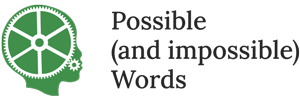
Evidence
In speech and language therapy
As a two way process
The Royal College of Speech and Language Therapists requires of its members that all the treatment they give is evidence-based. Evidence is obviously a two-way process. In science, as in court, evidence is found. And it is given. The finding is as important as the giving.
A supposedly high standard is set by the notion of proof. But whereas claims can be proved in mathematics, this is difficult or impossible where experimentation is involved. Experiments and analyses are never definitive, and sometimes provably wrong. The most that can generally be said is that a claim for some intervention is supported by evidence which is as complete as possible, internally consistent, parsimonious, not provably wrong, and such that at least some predictions can be confirmed or disconfirmed. Over time, as evidence accumulates, this can approximate to a proof, but no more.
The case is similar in cosmology where experimentation is impossible. In the study of human language and how it is learnt, experimentation is limited by obvious ethical considerations. A theory can be disproved by showing that it has preconditions which are impossible or or implictions which are untrue. In both of these fields, the best hope for a theory is for it to make testable predictions. The more accurately these can be confirmed, the better the hope for the theory.
In speech pathology it is possible to take a therapy, modify one aspect of it, and then contrast the effects of the original and modified versions. There is a valid comparison if the clinical populations are carefully controlled. A grossly distorted version of this has happened with respect to the therapy characterised here as Possible words. Here the modification was profound, but the relation between the two therapies was obvious to any careful reader. With no control of the clinical populations involved, no proper comparison can be made. But having developed the original therapy, I can say that the criteria of success adopted in relation to the modified version were significantly less than those I use myself. On such grounds it could reasonably be said that the modification was not successful.
In Nunes (2002) I set out to show that the distribution of children’s speech errors was highly asymmetric. There are many cases where one sound in a word is clearly influenced by another sound and there is no obvious reason for the influence to be in one direction or the other. For instance, many children say the word magnet as MAGNIK with the back of the tongue feature of the G clearly influences the tongue tip T. And many children say calculator as KALTALAYTOR with the opposite set of relations between the same features. But in neither my clinic nor in either of two experiments did any child do the opposite, and say magnet as MADNIT or calculator as KALKALAYKOR. If these asymmetries are widespread, this deserves explanation. Setting aside the explanation by Nunes (2002), by the framework here, these asymmetries fall out from the organisation of a ‘Universal Grammar’ as the consequence of fact that speech and language have evolved in the species.
This explanation is likely to be relevant to children who can be hardly understood and may go through life being unable to speak understandably. The relevance is shown by the way both normally developing children and those with disorders benefit from single experiences saying minimally contrasting series of forms. This is focusing on the positive, what the child CAN say, rather than drawing attention to what he or she can’t say.
The proof of the pudding
In speech pathology, it is sometimes claimed that a given intervention is justified by the fact that “It works” or that “The proof of the pudding is in the eating.” But there is a disingenuity in the word, proof. After any intervention progress may be clearly demonstrable. But from this it does not follow that the progress is the effect of the intervention. The progress may be entirely due to the clear and obvious focus on the child. A PROOF of the pudding requires an account of how and why it does what it is said to do. Like folk medecines from before the time of science, proof-of-the-pudding claims can’t be queried or compared with alternatives or modifications. Evidence is replaced by myth.

